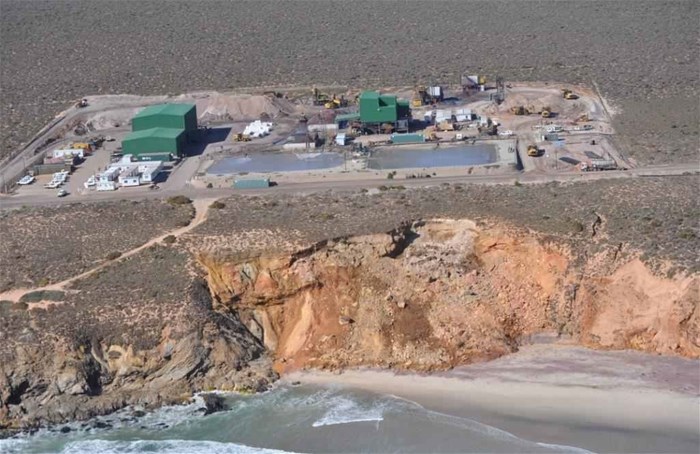






Consultants employed by Australian company Mineral Sands Resources have acknowledged that the massive expansion of mining for mineral sands on ten West Coast beaches north of the Olifants River estuary will cause unavoidable environmental damage, but claim that the damage can be reduced to “acceptable” levels.
This is one of the key findings of a draft Environmental Impact Assessment (EIA), part of a new application by controversial Australian mining company Mineral Sand Resources (MSR), published on 18 September for public comment.
The draft EIA has been released while MSR is still waiting for a decision on its separate application to condone earlier flouting of environmental regulations. The company had already started work on the proposed expansion before approval had been granted by the Department of Mineral Resources.
MSR, a subsidiary of Mineral Commodities Ltd, that trades on the Australian Securities Exchange as MRC, owns and operates the 120-hectare Tormin Mineral Sands Mine on the West Coast near Lutzville. The company extracts extremely rich concentrations of mineral sands such as zircon, ilmenite, rutile, magnetite and garnet from below the high-water mark.
Last year, it applied to extend mining operations to another ten beaches north of the existing mine. This would involve mining the inter-tidal zone over 43.7ha and widening the haul road over six hectares, as well as mining a 75ha “strand line” (former shoreline) area inland of Tormin’s existing processing plant.
Tormin also wanted approval for an additional 64ha infrastructure and plant expansion area.
On 22 November, the department refused environmental authorisation, saying it was not satisfied with the way the impact assessment process had been conducted or with the company’s compliance with legal requirements.
A site inspection by the department’s staff had revealed that Tormin had contravened the National Environmental Management Act (NEMA) by unlawfully starting work on listed activities. In other words, it was already doing some of the things for which it was applying for authorisation. The department also said that the mining company and its consultant – Rondebosch-based consulting company SRK – had not disclosed these NEMA contraventions to the department, to other state organs or to the public.
Tormin then submitted a Section 24G application in terms of NEMA regulations for “rectification of unlawful commencement of the listed activities” – in essence, for legalising an unlawful act – and re-started the environmental impact assessment process for the mine’s expansion.
This will involve mining sand between the low-water mark and the “toe” of the coastal dunes and/or cliffs (with a 10m buffer zone) to an average depth of six metres. Strip mining of the inland strand line will be undertaken progressively using excavators to extract the mineralised sand layer up to a maximum depth of 30m, with an average of 10m.
Although the department has not yet ruled on the 24G application, a new draft EIA was released last week with a 30-day comment period.
The consultants note that most of the area under application falls within a Critical Biodiversity Area, designated to promote coastal resource protection and to maintain ecological processes associated with the coastal. However, they say, specialist studies did not identify any specific areas that should be designated as “exclusion zones”. These studies have shown that the extension project is “generally acceptable”, they say.
“The Tormin Mine extension project will result in unavoidable adverse environmental impacts. None of these adverse impacts are considered unacceptably significant and all can be managed to tolerable levels through the effective implementation of the recommended mitigation measures. In addition, the project will, directly and indirectly, benefit the local and regional economy.”
They conclude that on purely environmental grounds - “the project’s potential socio-economic and biophysical implications” - the application should be approved, provided the proposed mitigation measures were taken.
Concerns raised by interested and affected parties during the initial phase of the EIA included:
A Public Open Day is being held at the Lutzville Hotel on Wednesday 3 October between 3-6pm.

GroundUp is a community news organisation that focuses on social justice stories in vulnerable communities. We want our stories to make a difference.
Go to: http://www.groundup.org.za/